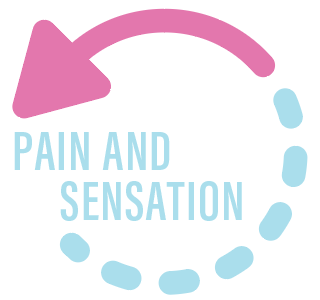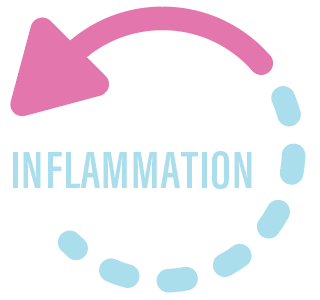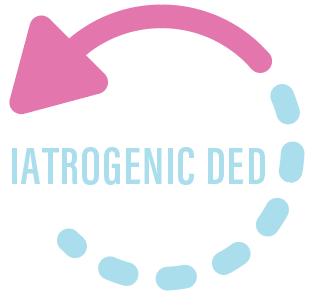In July 2017, the Tear Film & Ocular Surface Society (TFOS) Dry Eye WorkShop II (DEWS II) report was published. This massive undertaking involved 150 clinical and basic research experts from 23 countries who used an evidence-based approach and open communication, dialogue, and transparency to achieve a global consensus concerning multiple aspects of dry eye disease (DED).
After 2 years of extensive literature review, the result was a nearly 400-page document updating several aspects of the landmark TFOS DEWS report published in 2007.1,2 By no means comprehensive, this article covers a few significant updates from the TFOS DEWS II report.
KEY UPDATES

One of the most important updates from TFOS DEWS I to TFOS DEWS II was the definition of dry eye disease. For the past 10 years, this definition has been heavily cited in virtually every dry eye paper and talk. For the second iteration of this report, there was a lot of discussion as to what to do with the definition; many committee members wanted to simplify it while others wanted a more detailed update. After 2 years of deliberation, a new definition was established.
The inclusion of the phrase “loss of homeostasis” is key. This definition clarifies, based on recent peer-reviewed evidence, that tear film hyperosmolarity, instability, and ocular surface inflammation play etiologic roles, along with the addition of neurosensory abnormalities (contributing to the common mismatch between signs and symptoms) for the first time.

Sex and gender are distinct entities in the medical literature. Sex is based on biological characteristics, and gender is based on socially accepted characteristics. Female sex is a demonstrative risk factor for DED across virtually every study worldwide. Androgen deficiency likely has a role, but there are anatomic differences at play as well. Female gender is also a risk factor, stereotypically associated with greater willingness to report pain, whereas the masculine stereotype is traditionally more stoic. The TFOS DEWS II recommendation for eye care providers is to take both sex and gender into consideration when managing DED.

The epidemiology of DED continues to be a challenge due to the lack of a standardized worldwide definition and study criteria. TFOS conducted a meta-analysis of the world literature and found that the prevalence of DED ranged from 5% to 30%. The prevalence of meibomian gland dysfunction was between 30% and 68%.

We have always considered the tear film to consist of three layers: mucin on the bottom, aqueous in the middle, and a lipid layer on top. That is no longer true. As determined by TFOS DEWS II, the tear film consists of only two layers: a thin lipid layer on top and a mixed mucoaqueous layer underneath.
The lipid layer, which is derived exclusively from the meibomian glands, may not be as important in preventing tear evaporation as we have traditionally believed (in one in vitro study it contributed only 10%). The mucoaqueous layer plays a role in reducing evaporative forces as well.

There are two types of pain. First, there is neuropathic pain, which we now think of as central or trigeminal pain. Neuropathic pain is not DED and should not be diagnosed as such. It is a sensory pain, usually treated with systemic medications (gabapentin, anticonvulsant, and tricyclics).
Nociceptive pain is what we think of when we see damage to the cornea and the superficial corneal nerves in particular. One type of corneal sensory neuron is the cold thermoreceptor, comprising approximately 10% to 15% of sensory neurons, which not only sense changes in temperature but also in osmolarity. Confocal microscopy is emerging as a useful tool for establishing morphologic changes in the corneal nerves, and we will be seeing more about this in the future.

All forms of dry eye and conditions that can cause evaporation, ultimately leading to tear hyperosmolarity and tear instability, can cause a vicious circle of self-perpetuating inflammation. If not treated correctly, this inflammation continues to worsen with time and leads to ocular surface damage.

We have traditionally thought of DED as comprising two distinct primary subtypes: aqueous-deficient dry eye and evaporative dry eye. Interestingly, with the TFOS DEWS II report, all dry eye becomes evaporative at some point and the two subtypes are thought to exist on a continuum. Goblet cell loss is a feature of all forms of dry eye. Both aqueous-deficient and evaporate are still used to identify the primary initiating cause of DED for treatment purposes, but all DED will ultimately show characteristics of evaporative DED.

Eye care providers know well that our interventions can cause DED. Of the 100 best-selling systemic drugs in 2009, almost one-quarter of them are associated with DED. Big offenders include nonsteroidal anti-inflammatory drugs, analgesics, anti-allergy medications, and topical medications. Glaucoma drops containing benzalkonium chloride (BAK) wreak havoc on the ocular surface. And, of course, ocular surgery—cataract procedures and laser vision correction in particular—can have a significant effect on DED.

The TFOS DEWS II report issues recommendations for how DED is diagnosed. Per that guidance, the patient comes into the office, the eye care provider asks triaging questions to determine if the patient is symptomatically in the realm of ocular surface disease. If so, the eye care provider should have the patient complete a validated DED questionnaire; the Ocular Surface Disease Index (OSDI) or the Dry Eye Questionnaire 5 (DEQ-5) are recommended. If the patient is above the cutoffs on those questionnaires, then the eye care provider looks for a marker of reduced tear homeostasis.
If the patient’s tear break-up time, osmolarity, and/or staining is abnormal and symptoms are present, then a diagnosis of DED is issued. From there, the eye care provider should determine whether it is primarily aqueous-deficient, evaporative, or a so-called hybrid of the two. Many tools for this are available today, including meibography and lipid layer thickness. If you have them, use them. That is how the TFOS DEWS II report recommends diagnosing DED.

Treatment of DED is based on etiology and severity. The ultimate goal for management circles back to the new definition: to restore homeostasis of the ocular surface. The treatment algorithm, however, is not rigid—DED is too diverse. The heterogeneity of the DED patient population mandates that patients be managed and treated based on individual profiles, characteristics, and responses.
CONCLUSION
The points detailed above are just some of the key tenets of the TFOS DEWS II report. I encourage all eye care providers to dive deeper into the committee’s findings (published in the July 2017 issue of The Ocular Surface), as they will continue to shape how we define, diagnose, and treat DED for years to come.



